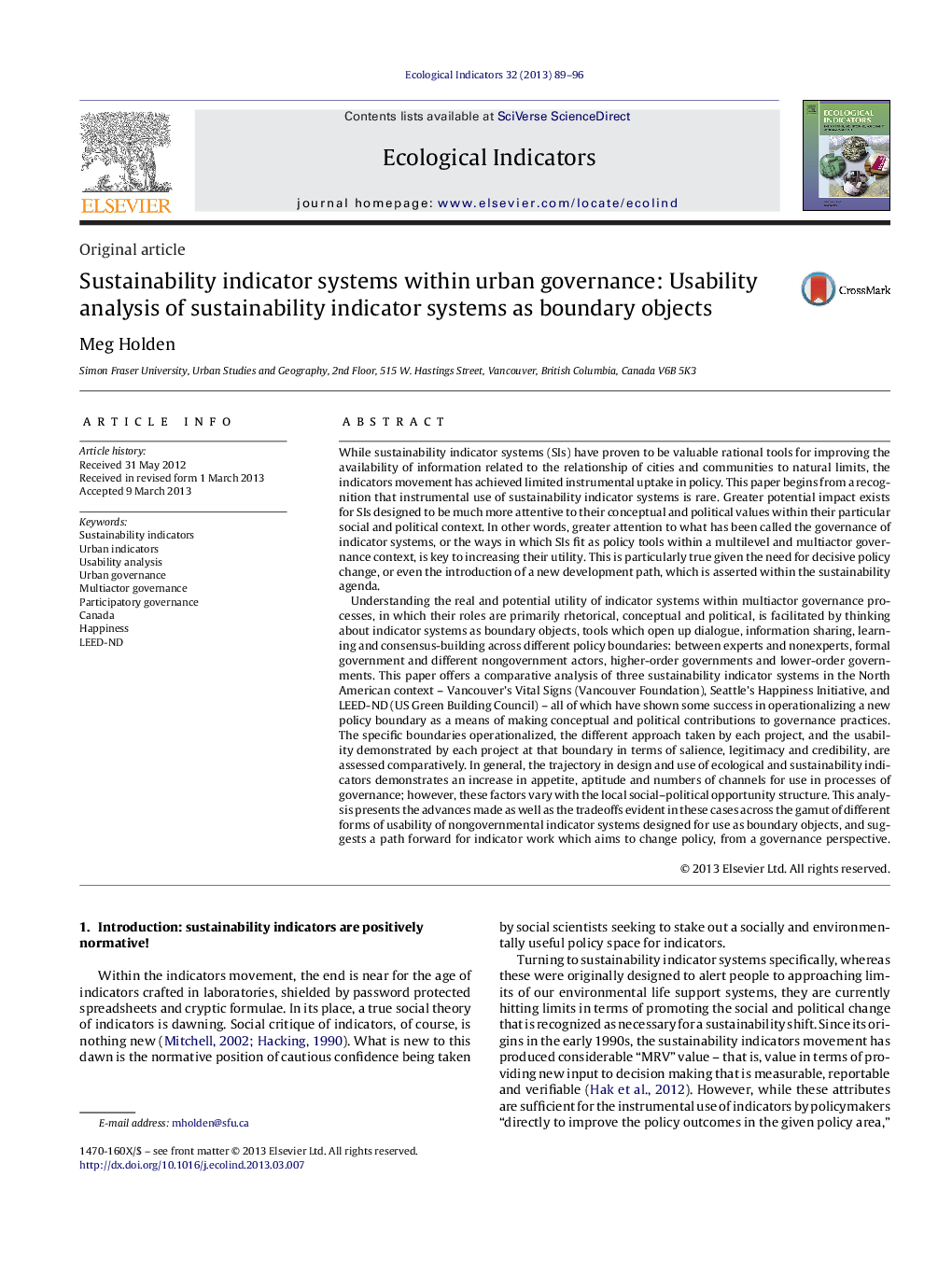| Article ID | Journal | Published Year | Pages | File Type |
|---|---|---|---|---|
| 4373390 | Ecological Indicators | 2013 | 8 Pages |
•Indicator systems as boundary objects support exchange across groups in governance.•Diverse policy boundaries have diverse features for indicator systems to negotiate.•Rhetorical, conceptual and political utility of indicator systems is assessed.•Vancouver Vital Signs, the Happiness Initiative, and LEED-ND systems are compared.•Optimizing usability in one dimension may entail trade-offs with other dimensions.
While sustainability indicator systems (SIs) have proven to be valuable rational tools for improving the availability of information related to the relationship of cities and communities to natural limits, the indicators movement has achieved limited instrumental uptake in policy. This paper begins from a recognition that instrumental use of sustainability indicator systems is rare. Greater potential impact exists for SIs designed to be much more attentive to their conceptual and political values within their particular social and political context. In other words, greater attention to what has been called the governance of indicator systems, or the ways in which SIs fit as policy tools within a multilevel and multiactor governance context, is key to increasing their utility. This is particularly true given the need for decisive policy change, or even the introduction of a new development path, which is asserted within the sustainability agenda.Understanding the real and potential utility of indicator systems within multiactor governance processes, in which their roles are primarily rhetorical, conceptual and political, is facilitated by thinking about indicator systems as boundary objects, tools which open up dialogue, information sharing, learning and consensus-building across different policy boundaries: between experts and nonexperts, formal government and different nongovernment actors, higher-order governments and lower-order governments. This paper offers a comparative analysis of three sustainability indicator systems in the North American context – Vancouver's Vital Signs (Vancouver Foundation), Seattle's Happiness Initiative, and LEED-ND (US Green Building Council) – all of which have shown some success in operationalizing a new policy boundary as a means of making conceptual and political contributions to governance practices. The specific boundaries operationalized, the different approach taken by each project, and the usability demonstrated by each project at that boundary in terms of salience, legitimacy and credibility, are assessed comparatively. In general, the trajectory in design and use of ecological and sustainability indicators demonstrates an increase in appetite, aptitude and numbers of channels for use in processes of governance; however, these factors vary with the local social–political opportunity structure. This analysis presents the advances made as well as the tradeoffs evident in these cases across the gamut of different forms of usability of nongovernmental indicator systems designed for use as boundary objects, and suggests a path forward for indicator work which aims to change policy, from a governance perspective.
